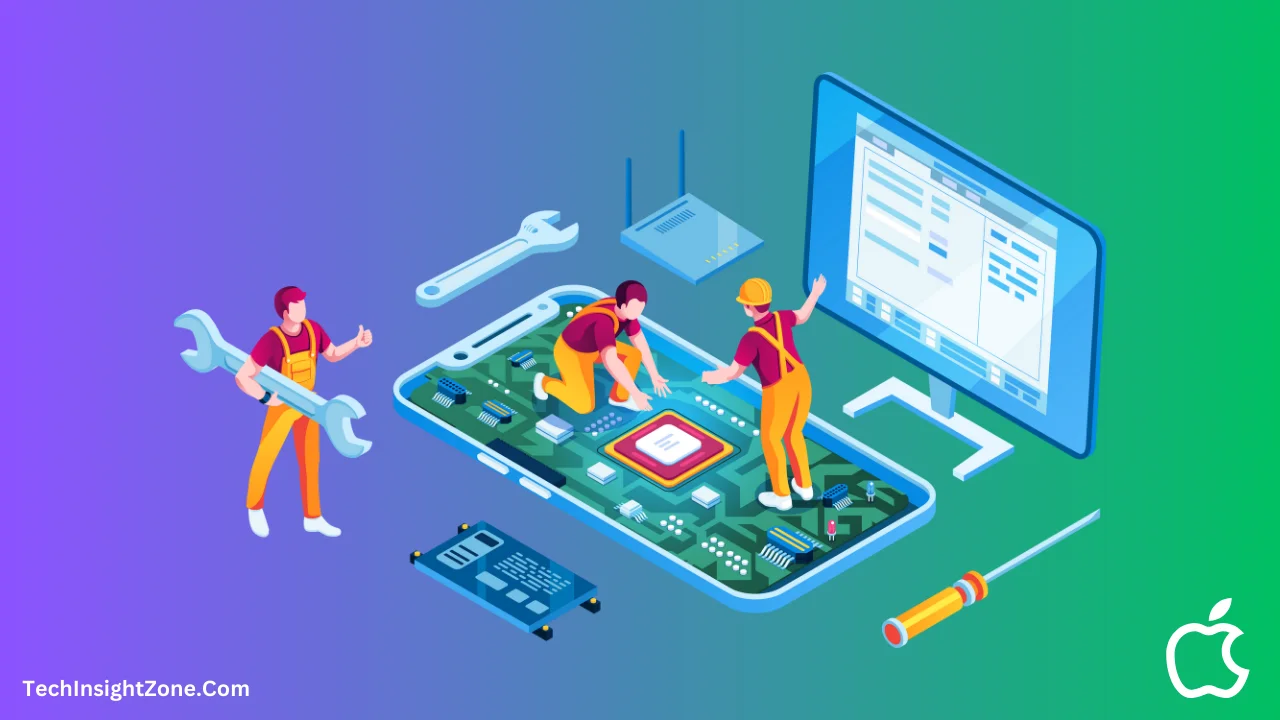In a significant move towards sustainability and consumer empowerment, Apple has announced an enhancement to its existing repair processes. Starting this fall, customers and independent repair providers will be able to utilize used Apple parts in repairs for select iPhone models.
Apple will now offer repairs using genuine Apple parts that have already had a life in another iPhone. This means potentially cheaper repairs for you, especially if your iPhone is an older model.
Replacing a cracked screen or a tired battery with a pre-loved part could be a significant cost saver.
This move is a win-win for several reasons. First, it opens the door for more repair options. Right now, repairs might be limited depending on your location or the authorized shops available.
Used parts could mean more independent repair shops getting involved, giving you more flexibility and potentially faster turnaround times.
This initiative is not just a win for consumers looking for more repair options, but also a step forward in Apple’s commitment to reducing environmental impact and increasing product longevity.
Why the Change, Apple? A Customer-Focused Move
It’s likely a combination of both factors influencing Apple’s decision to introduce used parts for iPhone repairs.
Market pressure: Other smartphone brands often offer more affordable repair options, including using third-party parts. This can be attractive to customers, especially those on a budget. By introducing used parts, Apple might be responding to this competitive pressure and offering a more cost-effective solution within their ecosystem.
Customer demand: There’s been growing customer demand for more affordable and accessible iPhone repair options. Right to repair movements have also advocated for users to have more control over fixing their devices. Apple acknowledging this demand shows they’re listening to customer concerns.
Environmental benefits: E-waste is a growing concern, and reusing parts aligns with Apple’s recent emphasis on sustainability efforts. This could be another factor influencing their decision.
While we can’t know for sure the exact reasons behind Apple’s move, it likely considers both market competition and customer demands, while potentially aligning with their environmental goals.
How You Can Access the Self-Service Repair Program with Used Parts?

Availability: The program launches this fall, but only for select iPhone models. We’ll need to wait for an official announcement to know which models are included.
a. Steps to Use Self Service Repair:
- Review the Repair Manual: Head to Apple’s website and find the repair manual for the specific iPhone model you want to fix. This will give you step-by-step instructions for the repair process.
- Order Parts and Tools: Once you’ve familiarized yourself with the repair process, visit the Apple Self Service Repair Store. Here, you can order the necessary parts (including used parts this fall!) and tools. It’s important to note that these tool rentals are typically for a week.
b. Performing the Repair:
- Apple emphasizes that this service is intended for users with relevant experience repairing electronic devices. If you’re not comfortable doing it yourself, consider an Apple Store or an Authorized Service Provider.
- After receiving the parts and tools, you can proceed with the repair following the instructions in the manual.
c. Post-Repair and Checking Repair History:
- The good news is that calibration for both new and used genuine Apple parts will happen directly on your device after the part is installed.
- You can access the Parts and Service history feature within your iPhone settings to see the repair history and details about the parts used, including whether they were new or used.
Remember, this is a new program with used parts being introduced this fall. Stay tuned for updates from Apple regarding specific iPhone models and any potential changes to the Self Service Repair process.
The Future of This Approach and Challenges
While this initiative is a significant step forward, it also presents challenges. One of the key challenges is ensuring the privacy, security, and safety of iPhone users.
To address this, Apple has developed a process of confirming whether a repair part is genuine and gathering information about the part, often referred to as “pairing”. This process is critical to preserving the privacy, security, and safety of iPhone users.
Furthermore, Apple is extending its popular Activation Lock feature to iPhone parts to deter stolen iPhones from being disassembled for parts.
If a device under repair detects that a supported part was obtained from another device with Activation Lock or Lost Mode enabled, calibration capabilities for that part will be restricted.
However, Apple’s decision to expand its repair options is a significant step towards empowering consumers and promoting sustainability.
It reflects the company’s commitment to improving access to safe and affordable repairs, and its dedication to reducing its environmental impact.
As we look to the future, it’s clear that initiatives like these will play a crucial role in shaping the tech industry’s approach to product longevity and environmental responsibility.
Furthermore, another noteworthy project from Apple, “The Speed Project,” emerges, offering a captivating exploration of endurance and innovation.
Discover more about Apple’s relentless pursuit of excellence and delve into the intriguing world of “The Speed Project” for an inspiring journey ahead.




